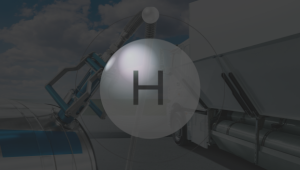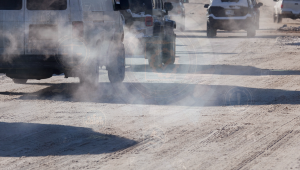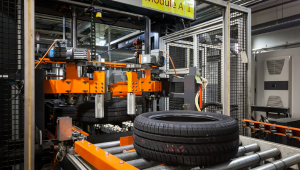Program Overview
As global mobility shifts toward cleaner, more responsible technologies, the tyre industry faces a dual challenge — maintaining performance excellence while minimizing environmental impact. This program equips participants to lead that transformation by mastering the science of sustainable materials, energy-efficient processes, and circular product design. Through real-world examples and interactive exercises, participants will learn how to reduce emissions, integrate bio-based compounds, optimize resource use, and comply with emerging ESG and regulatory standards. The course bridges technical innovation with corporate sustainability strategy — helping professionals design tyres that are both road-ready and planet-positive
Features
- Understand the principles and lifecycle impacts of sustainable tyre design
- Integrate green materials, recycled inputs, and low-emission processes into manufacturing
- Apply ESG, LCA, and carbon accounting frameworks to product and process innovation
- Develop actionable strategies for circularity and regulatory compliance
Target audiences
- R&D and Product Development Teams
- Supply Chain and Procurement Managers
- Process and Manufacturing Engineers
- Quality & EHS Managers
- Sustainability & ESG Professionals
Curriculum
- 5 Sections
- 37 Lessons
- 1 Day
Expand all sectionsCollapse all sections
- The Green Imperative in the Tyre Industry6
- 1.1Life-Cycle Assessment (LCA) and cradle-to-grave impact mapping
- 1.2Carbon footprint contributors — materials, curing energy, logistics
- 1.3Alignment with Sustainable Development Goals (SDG 12 & 13)
- 1.4ESG and Extended Producer Responsibility (EPR) frameworks
- 1.5Global sustainability regulations — EU Green Deal, India PCR norms, and ISO 14040 series
- 1.6Interactive Exercise: LCA heat-map – identify top emission sources across the tyre value chain.
- Sustainable Materials & Green Compounding8
- 2.1Bio-based Polymers: Guayule rubber, bio-SBR, natural polyisoprene alternatives
- 2.2Green Fillers: Precipitated silica, recovered carbon black (rCB), rice-husk ash, lignin
- 2.3Recycled Content: Devulcanized rubber (DVR), crumb rubber integration
- 2.4Eco-friendly Oils & Plasticizers: TDAE, bio-esters, vegetable-based alternatives
- 2.5Non-toxic Accelerators: Glycerol-based systems replacing nitrosamine-generating agents
- 2.6Low-PAH and REACH-compliant compounds
- 2.7Industry Examples: Michelin’s BIOISOPRENE initiative for renewable isoprene rubber; Bridgestone’s use of guayule as a sustainable natural rubber source
- 2.8Exercise: Re-formulate a tread compound using ≥50% green inputs while meeting durability and performance targets.
- Energy Efficiency and Low-Carbon Manufacturing7
- 3.1Smart metering and IoT-based energy dashboards
- 3.2Waste-heat recovery from curing presses
- 3.3Low-temperature curing chemistries and microwave vulcanization
- 3.4Renewable energy integration (solar, biomass, biogas)
- 3.5ISO 50001 energy management implementation
- 3.6KPI tracking: Specific energy consumption (kWh/tyre), CO₂ per tonne output
- 3.7Activity: develop a mini “Energy Kaizen” proposal to improve energy intensity for their process area.
- Design for Recycling and Circular Economy7
- 4.1Retreading vs. recycling – performance and cost trade-offs
- 4.2Design for disassembly and material recovery
- 4.3Pyrolysis and chemical recycling for end-of-life tyres (ELTs)
- 4.4Recovered carbon black (rCB) and reclaimed rubber integration
- 4.5EPR compliance and circular product stewardship models
- 4.6Global Benchmarks: Continental’s ContiRe retreading initiative, Goodyear’s Circular Economy roadmap
- 4.7Interactive Exercise: Design a “Tyre Take-Back Program” defining logistics, KPIs, and recycling partnerships
- Measuring Impact and Sustainability Analytics9
- 5.1Carbon accounting and GHG Protocol (Scopes 1, 2, and 3)
- 5.2Water footprint and VOC emission tracking
- 5.3Product Environmental Footprint (PEF) modeling
- 5.4Blockchain traceability for sustainable sourcing
- 5.5ESG metrics integration into product KPIs
- 5.6Calculate the carbon footprint of a tyre batch using sample datasets and identify reduction hotspots
- 5.7Activity: “Green Line Blueprint” – design a process cell combining low-carbon materials, energy efficiency, and circularity.
- 5.8Quick-win ideas for reducing energy, waste, or emissions
- 5.9Measurable targets aligned with organizational sustainability goals






